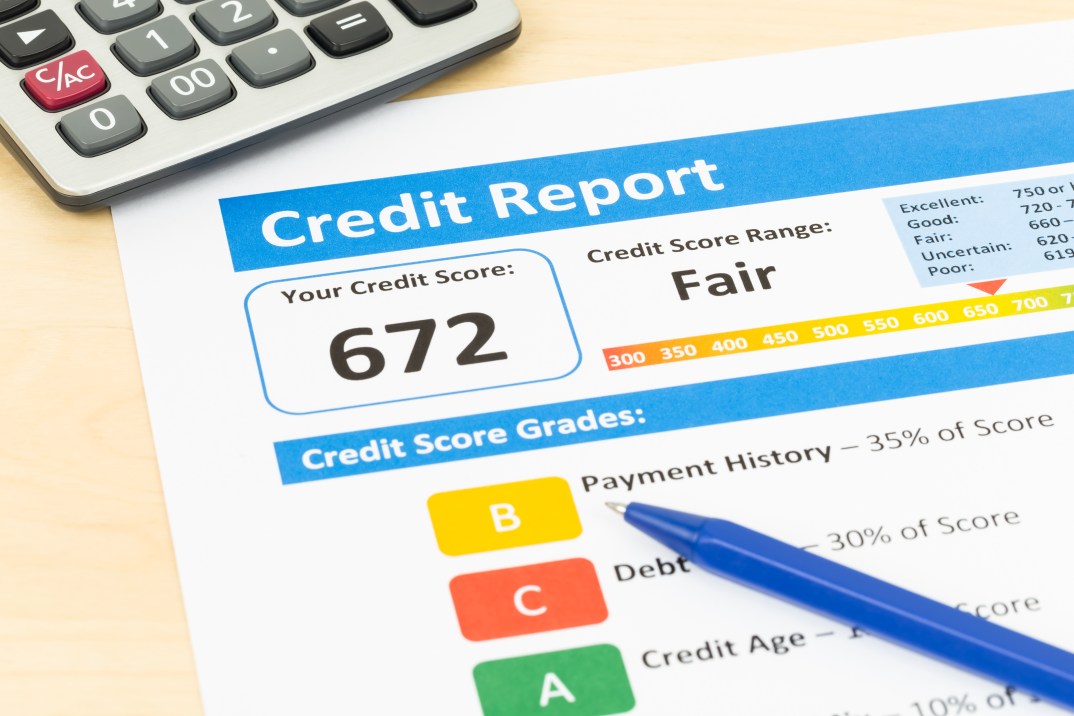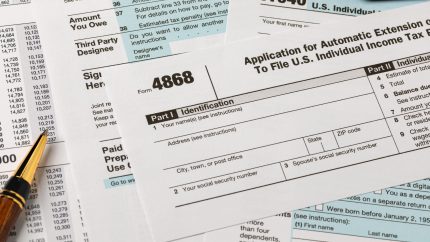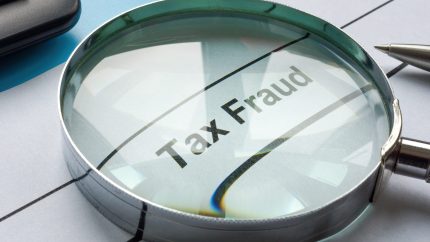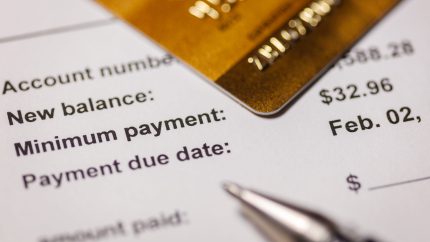The credit score system is a scam, but there are ways to play the game and win
OPINION: There are many ways in which having a good credit score can benefit you in life, but you have to first understand that the system is rigged against the average person.

Editor’s note: The following article is an op-ed, and the views expressed are the author’s own. Read more opinions on theGrio.
I was on “TheGrio with Marc Lamont Hill” last week, and one of the topics we discussed was a new service called Score, which bills itself as “the dating app for people with good credit.”
In order to join the app, you have to have a credit score of 675 or better, and this is verified with a soft pull on your credit before you are even allowed to join the app. Your score will not be shared with other users, and no one will be able to access your credit information, but the app promises that everyone else you encounter on the app will have a score of 675 or better.
I had to let out a hearty chuckle at the entire idea behind the app, beginning with the idea that 675 is a “high” credit score.
While 675 may get you that apartment you are applying for or that credit card you want in the credit game, according to the three major credit reporting bureaus, 675 – while not a bad score – is definitely not the definition of good credit.
Marc asked me and Feminista Jones if we thought this app was a good idea, and we both thought it was laughably ridiculous.
Please understand that a good credit score is no more an indication of wealth than a bad credit score is indicative of poverty. There are rich people with bad credit and poor people with good credit. I heard there’s a “rich” person right now who is running for president, and he doesn’t pay his bills either.
It’s also important to understand that the credit system is arbitrary and almost purposely confusing to the average consumer; most people don’t have a firm understanding of what drives their credit scores and how they can improve them, and this leads to many wasting hundreds or thousands of dollars on “credit repair” companies — which, in my opinion, are also a scam.
I would like to take this opportunity to try and explain some of this.
For those who are unaware, journalism is a second career to me. Prior to returning to college at the age of 40 to pursue a degree in journalism, I spent most of my adult life working in consumer finance for various banks, including American Express, NationsBank (which bought Bank of America and took over the brand while I was still an employee), Citibank, Wachovia, Credit One and many others. I could write an entirely different column about the revolving door that is the consumer finance industry and how people bounce from one bank to another doing the same thing over and over again, but that’s a different part of the game that needs to be sold and not told, baby.
Anyway, I shared the above just so people are aware I’m not pulling any of this out of thin air.
Personal Finance
FICO, or the Fair Isaac Corporation, is the company that came up with the credit scoring model that most banks and businesses use today when scoring your credit, which is why your credit score is also referred to as your FICO score.
In the 1960s, there were more than 2,000 credit bureaus across the United States, according to CNBC, and that should tell you about how wide and varied the information each of them had. Over the next 20 years, that number went down to just the three major credit bureaus we know today – Equifax, Experian and Transunion.
In 1989, FICO got together with major banks to create a credit scoring system that could be used for all consumers, and that system became the standard in the 1990s when mortgage lenders Fannie Mae and Freddie Mac started requiring them as part of the mortgage loan application process.
If I had to give my opinion on how the three bureaus rate, I would say that Experian is probably the toughest and in my experience usually has the most up-to-date information. Transunion is old and iffy at times, and my Transunion score is usually 20 to 30 points lower than the score that shows up on my Experian report for whatever reason. I’ve also noticed that some accounts that are on my Experian report don’t show up on Transunion at all, and that’s because not all creditors report to all three bureaus.
Equifax is the ghetto cousin of all the credit bureaus. Their information, again, in my experience, can sometimes be out of date or late to the party depending on how you look at it. I also noticed that some of my creditors don’t report to them either. For example, I owe a ton of money in student loans, and for whatever reason, some of those loans don’t show up on my Equifax report.
With all that said, there are ways you can work the system to your advantage if a high credit score is your aim.
First and foremost, familiarize yourself with all three of your credit reports. You are entitled to one free copy of each report per year. I would recommend signing up for an account on Experian. If you can afford it, it’s worth paying the extra monthly fee to have Experian access all of your credit reports for you because then you can pull them any time you want.
If you don’t want to go that route, most banks offer a free credit reporting tool as well, although, in my experience, most banks use Transunion for their credit reporting tool, so that won’t be as helpful if you are trying to monitor all three scores.
Credit Karma is a website that offers a free credit monitoring tool, but it only shows you your Transunion and Equifax scores. If you combine that with the free account from Experian, then you can have a peek at your credit on all three bureaus.
When you sign up for these services, be sure to sign up to get alerts any time anything changes on your credit report — this includes inquiries, any accounts being reported as past due, new collection accounts, etc.
Your credit score is calculated based on a formula that considers your history of on-time payments; your credit utilization; your credit history or the length of time you have had your oldest credit account; the amount of new credit you have; and the mix of credit you have – in other words, the different types of credit accounts you have (mortgage, car loans, credit cards etc.)
The breakdown, according to myFICO, is as follows: Payment history accounts for 35% of your score; the amounts you owe on your credit account for 30%; credit mix 10%; length of credit history 15%; and new credit 10%.
Pay attention to the cycle dates on your credit cards. The cycle date is the day your credit card statement closes and the new bill comes out each month. Whatever balance is on your card on that date is the balance that will be reported to the credit bureaus. You want to make sure your balance is as low as possible on that date. The idea is that you keep a credit utilization (the amount of credit you use versus the amount of credit you have available) of 30% or lower. I try to keep mine around 10%.
As an example, let’s say you have a big purchase or expense coming up, like a tax bill or you need to buy a new washer and dryer. It would be better to wait until your statement closes and then charge the expense, that way it doesn’t show up on your bill until the next statement.
My personal strategy is not to use my cards until after they cycle. I pay all my bills using my credit cards so that I show credit usage with the credit card company, and then each month I take the bill money and pay my credit cards off with it. I do this with each of my utilities as well as my rent, which I am also able to pay online with a credit card.
Because I am paying those balances down or off every month, I’m not getting charged interest, and in the eyes of the credit bureaus, I am a “good risk” because I use my credit cards regularly, I keep a low utilization, and I pay the bills off on time each month.
If you have had some hiccups in your credit history, don’t let that discourage you, and again, don’t fall prey to credit repair companies that are going to do things you could do yourself very easily.
Understand that you can dispute things on your credit report as well, and during the dispute, the item is removed from your credit report until such time as the person collecting on the debt can provide substantial evidence that you actually owe it.
This comes in handy if you find yourself in one of those situations where a debt has been sold multiple times to different third-party debt collectors. They are counting on you not knowing your rights, and they will use fear tactics to try and get you to pay, but most times a dispute finds that they don’t even have the original paperwork to prove the debt is owed in the first place.
Like I said before, the credit scoring system is arbitrary and purposely confusing to the average consumer. They don’t really want us to know exactly how they figure out our scores because it makes it easier for them to rig the system or change it whenever they want.
If you do your best to monitor your credit, pay your bills on time and use the cycle dates and utilization management to keep your score at a decent level, you can come out somewhat on top.

Monique Judge is a storyteller, content creator and writer living in Los Angeles. She is a word nerd who is a fan of the Oxford comma, spends way too much time on Twitter, and has more graphic t-shirts than you. Follow her on Twitter @thejournalista or check her out at moniquejudge.com.
Never miss a beat: Get our daily stories straight to your inbox with theGrio’s newsletter.








